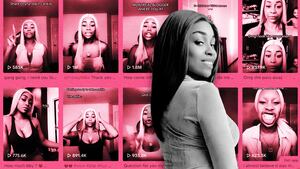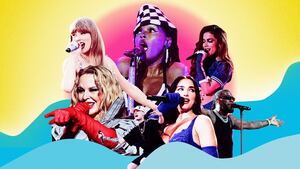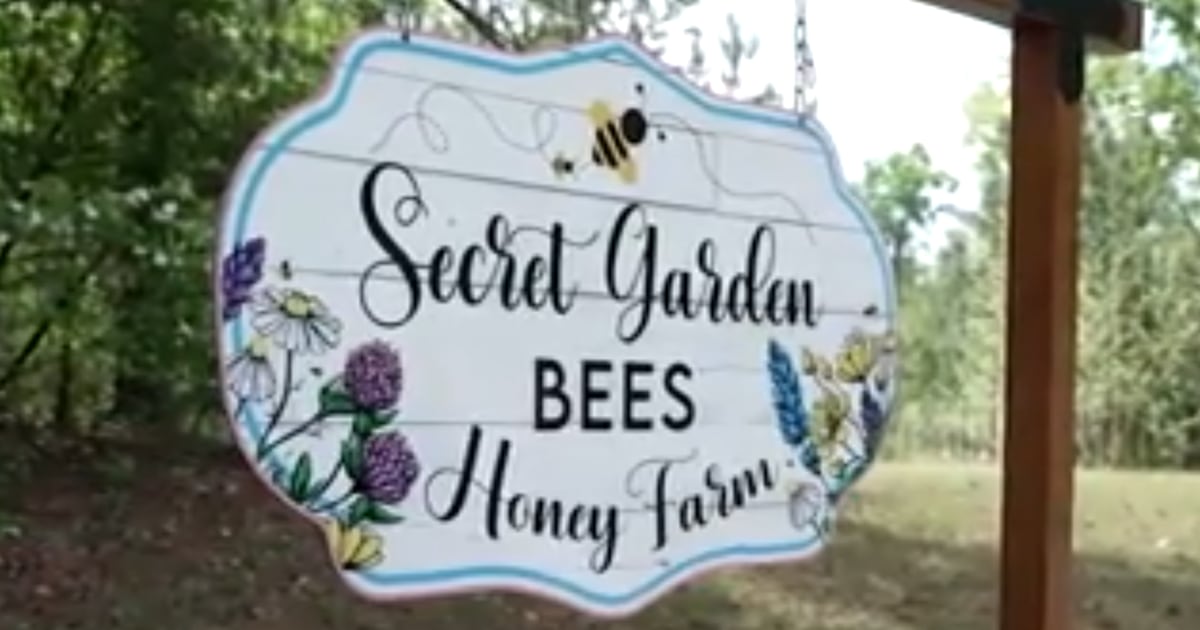This summer, it’s been hard to escape Kylie Minogue and her latest single “Padam Padam”—she hasn’t been this popular in two decades. The song charted at No. 8 in the U.K., No. 18 in the Digital Song Sales Chart in the U.S., became Minogue’s first song on the Billboard Dance/Electronic Songs Chart since it was founded a decade ago, and has amassed over 44 million streams on Spotify so far. It’s become an anthem in Pride parades across the world, and a politician in the U.K. even quoted the song in parliament. Now 55 years old, Minogue has had another career reinvention. How has she done it?
It’s undeniable that TikTok has played a considerable role. The social media app has become a powerful platform for making songs go viral—usually brand new tracks by new artists (“ABCDEFU” by Gayle, “Old Town Road” by Lil Nas X), or older songs by established artists (“Primadonna” by Marina, “Dreams” by Fleetwood Mac) that suddenly blow up.
But “Padam Padam,” a new song by an established artist, fits neither of these categories. Rather, according to Chris Anderton, associate professor in cultural economy at Solent University in the U.K., “Kylie’s TikTok success is the latest example of the music industry’s current social media strategies—using the platform both to break new songs and to revive the careers of evergreen artists and back catalog tunes.”
In a singing career spanning more than 35 years, Minogue has often had to change and adapt from girl-next-door, to pop sex symbol, to bona fide music royalty. But it’s been a while since she’s had a huge smash hit. Most of her fans, including her large LGBTQ+ following, are older millennials and Gen Xers, rather than those who came of age during the social media boom.
What she’s done so well with “Padam Padam”—something that many of her peers would do well to follow—is combine social media savvy with traditional marketing that will allow the song to reach not only potential new fans but also reinvigorate her classic fanbase.
“TikTok is only one part of a strategy that includes traditional media appearances and live performances that work together with the TikTok memes to amplify attention for the song and the singer,” Anderton told The Daily Beast. “In the U.S., the song debuted with a performance on the series finale of American Idol, while Minogue made a ‘surprise’ live appearance at Capital Radio’s Summertime Ball at Wembley Arena in London.

Kylie Minogue performs “Money Can't Buy” at the Hammersmith Apollo in London on November 15, 2003.
REUTERS / Stephen Hird“The timing of the campaign is also significant, given that the song was released just prior to Pride Month, hence linking in with her gay icon image and providing a song that could become the soundtrack of this year’s celebrations,” he added.
Minogue isn’t the only legacy artist to make the most of platforms like TikTok. Madonna has almost 4 million followers on there, for example. But even that figure is dwarfed by what dedicated TikTokers can boast. Khaby Lame has over 160 million followers, while Charli D’Amelio has over 150 million.
TikTok has a reach into demographics that more typical media like TV and radio simply can’t access. Minogue is one of the few who’s been able to crossover into both kinds of worlds, as she has done with ‘Padam Padam’.
But how can you make a song go viral on TikTok in the first place?
“Even the major labels are struggling with answering this question,” Cassie Petrey, co-founder of digital marketing company Crowd Surf, told The Daily Beast “The best advice I can give to artists is to put yourself out there, but for the right reason. Focus on making great video content, rather than trying to go viral.” Petrey, who has worked with Britney Spears, Camila Cabello, Backstreet Boys, and Gen Z TikTok icon Loren Gray, added that authenticity is paramount; if posting on the platform feels contrived to boost streaming numbers, “people can smell that from miles away.”
Ross Barber-Smith, founder of Electric Kiwi, which helps artists stand out online, explained that the TikTok algorithm curates your feed based on the content you’ve previously interacted with. “If an artist is looking to gain exposure on TikTok, they not only need to have content that is appealing, they have to be able to generate and encourage interaction—which will help to boost their videos in the algorithm”.
Record labels will look for “TikTokable” moments when they decide on songs to release, which can influence decisions around marketing, music videos, and even choreography.
That, in turn, has shaped some of the music itself that ends up on the platform, like the release of “sped up” versions of songs. “This could perhaps be attributed to a shorter attention span, and the desire to allow all of the ‘best moments’ of a song to be heard when used in a TikTok video,” Barber-Smith told The Daily Beast.
And in turn, fans will engage back on platforms like TikTok. “For decades fans have been engaging creatively with music, using the technological means available to them,” Lucy Bennett, a lecturer in media audiences at Cardiff University in the U.K., told The Daily Beast. The advent of Napster and song downloads made it easy to “own” songs with a few clicks—erasing the scarcity and limits of discovering new music and listening to something at will. Then listeners began watching music videos in full on YouTube, and creating fandoms around artists on Myspace and Tumblr. Now, we absorb short-form content on TikTok and Instagram reels—soundtracked with short snippets of songs.
“TikTok is allowing individuals to engage in short videos that allow them to perform, or be creative or articulate the meaning of a track to them,” said Bennett. “As culture has become more participatory, which has been fostered by developments in technology, fans’ engagement with music has developed alongside this.”
With individual tracks being available to listen to at any given moment, we aren’t listening to albums in full as much now (the vinyl revival notwithstanding) and we have shorter attention spans, like Barber-Smith mentioned. With streaming sites and their focus on playlists, we can pick and choose songs at our leisure, and it’s in an artist’s best interests to make shorter, snappier, TikTok-friendly tracks.
However, all of this revolves around the biggest change to the music industry in the last decade: streaming. The royalty rate is meager, and when you consider that it’s split between writers and collaborators, and the label, artists don’t make much from Spotify at all. Minogue is an established act who doesn’t need to eke out a living solely through current streaming numbers—but new acts continue to struggle.
So, what can artists learn from it all? Anderton thinks the success of “Padam Padam” is in part due to the marketing strategy used to promote it—and is a blueprint for other acts to follow. The combination of tried-and-testing promotion methods that will reach her existing fans, like the American Idol performance and the other media appearances Anderton mentioned, and direct promotion on platforms like TikTok.
One smaller act which has seen success on platforms like TikTok is Deco, an indie-pop four-piece from London. They boast almost 150,000 followers on the app, and a range of their ’80s-style covers of classic songs have gone viral.
“When TikTok first started, and it became clear how some artists had really used it to start/make leaps forward with their music careers, there was definitely a little bit of pressure from ourselves and management to try and start using the platform to our advantage,” the band told The Daily Beast. “Especially as its popularity increased during COVID.”
While Deco didn’t have a plan at first, its members say it took time to adjust from marketing themselves on Instagram and Facebook to making the more organic content that fits well on TikTok. While there was no huge urge to go viral, they said they’re “lucky” to have found a niche on TikTok.
For big artists in particular, the “old” methods still work. Artists like Beyoncé and Taylor Swift still generate huge amounts of excitement when they share new albums. People will go out and buy them, and listen to them in full as a coherent body of work. And of course, we don’t know if Minogue’s TikTok-speared career renaissance will continue.
But, according to Petrey, “Video content has become increasingly more popular over the past five years,” and consumers are “getting over performative content,” instead “watching people create simply for attention and engagement.”









